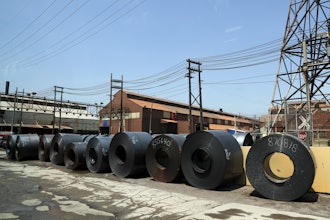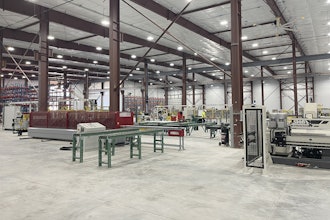
When it comes to generational descriptors, I fall within what’s dubbed the “elder Millennial” category. To be honest, I never really appreciated the term, or the inference that those of us born in the early end of the 1980s had a similar childhood experience to those who were born in the late end of that decade.
I didn’t grow up with the internet – not really, anyway, unless you consider the light utilization of dial-up for chatting and sharing email forwards in high school as being, in any way, useful. In college, email was employed sparingly and I still turned in hard copies of my papers. My flip phone was for emergencies and things like social media were just a glimmer in someone’s eye – and I have to say I’m glad for that.
Perhaps starting my career before the full-on, all-day-every-day use of technology is why I still have a soft spot for paper. With mild embarrassment, every December I place an order for my most critical piece of business “equipment” – the At-a-Glance monthly calendar where I document every meeting and appointment as the year goes on – with – *gasp* – a pen!
I was amused, then, to learn that I’m not the only dinosaur with a paper calendar – and that it might even be a good thing. A recent report published by Chief Executive explores the use of paper in both business applications and home projects. Citing a new study by the Columbia Business School, the article contends that users of paper calendars, to-do lists and the like “developed higher quality plans and fulfilled them at a higher success rate than their counterparts who used mobile phones.”
Finally… vindication! Kind of.
Paper calendars offer the benefit of a more full-on view where users saw more detail without having to click on an event – and were therefore better at planning ahead. Yet, the role they play seems to me to be less of a replacement for technology, but a supplement.
Allow me to elaborate. Back in the late 1990s – when technology was just beginning to gain a foothold in business and consumer applications – the results of corporate investment in these types of newer, digital solutions were staggering. In 2001, the National Bureau of Economic Research attributed “unusually high,” permanent productivity gains to accelerating technical change.
Since then, the added enhancements have been more incremental, but have added profound efficiencies nonetheless. Things like cloud computing techniques – where live documents exist for real-time changes and collaboration from anywhere in the world – have become so clearly embedded in business operations that it’s hard to imagine a time where they didn’t exist.
I’m not too young not to remember hauling into the office on a weekend when I was on deadline because access to the documents and design programs I needed were relegated to one machine. And while I still love my paper calendar (and love that research supports my impulse to use it), I think it’s just one tool in the toolbox that we get to create based on what works best for us as individuals and teams.
For me, that means some paper. But it also means as many well-placed digital tools as I can get. It means writing things down, and then setting alerts that reach my inbox or mobile device. It’s making lists and then using dashboards to track resources and materials so nothing gets missed. In the end, the exact details of the strategy are up to you. Don’t be afraid of paper! But don’t let your business management techniques end there. It’s too important not to use everything that’s at our disposal.























